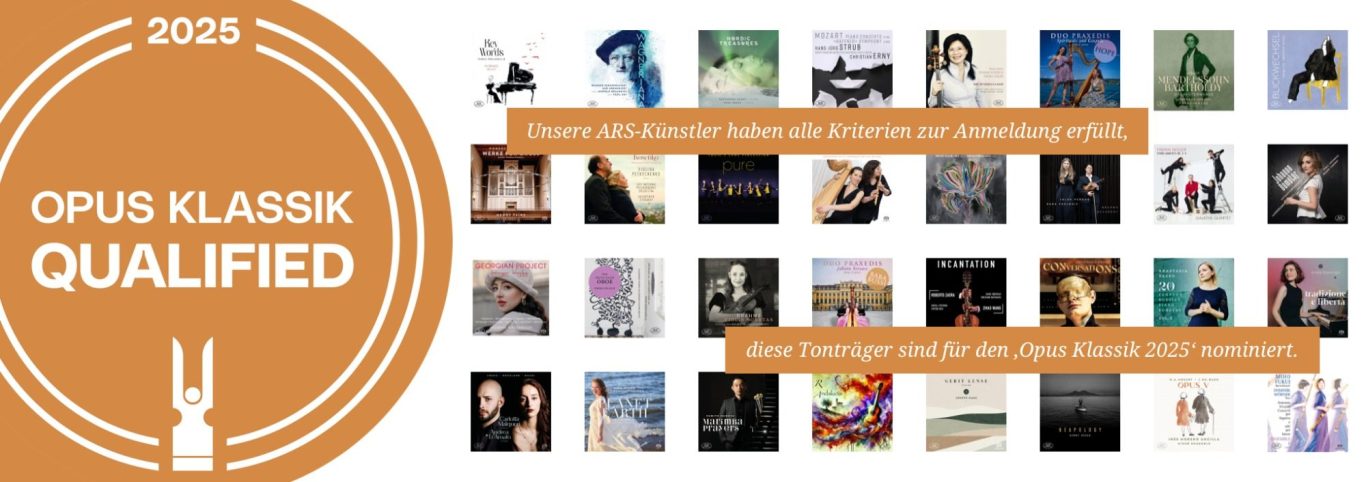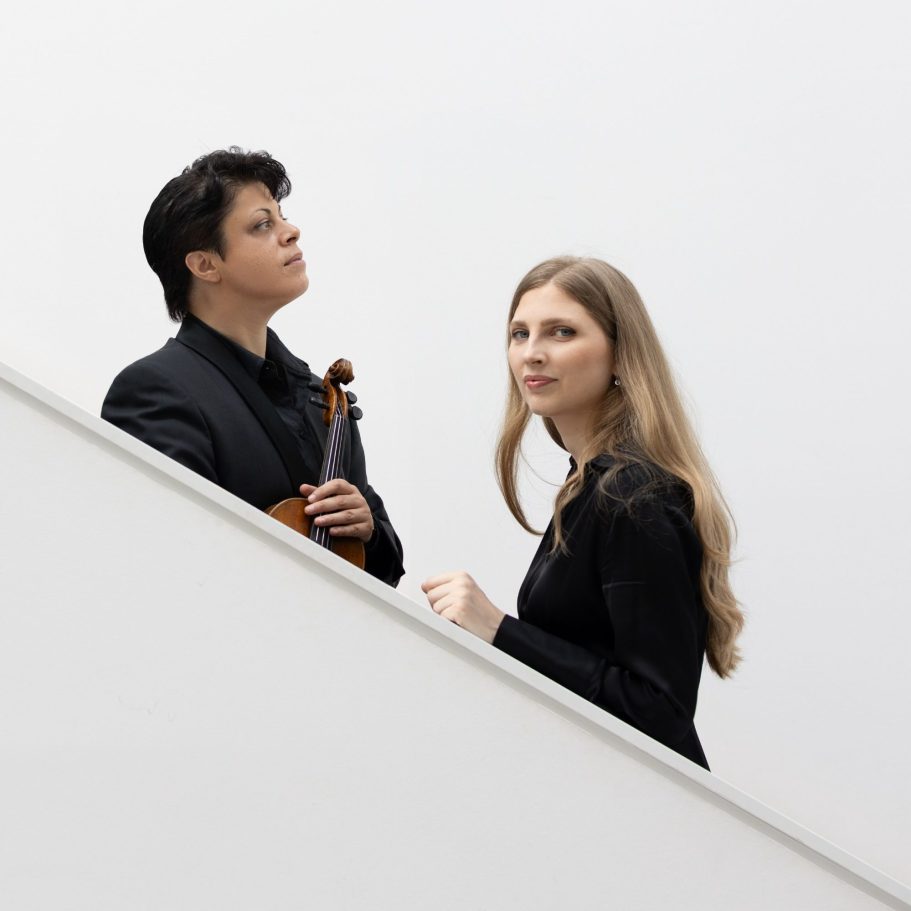
Debut album
«With a spirited approach, they find their very own tone, which above all brings out the romantic sides of the works ...»
– Georg Stein
Klassik Festival

«Vocally ideal Brahms.
The serene soulfulness and wistfully hopeful intimacy between spring and autumn feelings of Johannes Brahmsʼ 1st Sonata in G major op.78 suits Jaleh Perego particularly well, thanks largely to her warm-hearted tone with its dusky, velvety shades and her extremely flexible phrasing. Everything explicitly lyrical suits her ideally.»
– Christoph Schlüren
(Klassik Heute, 27.3.2025)

«Characteristic sonatas in consistent performances.»
– Uwe Krusch
(Pizzicato, 9.3.2025)

«Schubert of otherworldly magnitude...
Sara Pavlovic follows her so far into the realm of a dream-singing... This alone makes the purchase of this exceptional album already rewarding. The fast parts are performed flawlessly as well, which is equally remarkable considering the tremendously awkward writing of both instrumental parts.»
– Christoph Schlüren
(Klassik Heute, 27.3.2025)
Reminiscence
The Violin Sonata in G major by Johannes Brahms and Franz Schubert's C major Fantasie harbour auratic traits that can be traced back to the origin of their lyrical themes in both of the composers' own songs. Like the art song, the sonata and fantasia are among the favoured forms of expression in Romantic chamber music. In the intimate cenacle, where musicians and listeners converse, the poetic meaning is enhanced through its setting to music. As Eichendorff wrote, the poet’s word awakens the song that slumbers, dreaming on and on through everything. Yet in the view of Romantic art, only instrumental music, unbound from the shells of language, can lay bare the ineffable.
In 1878, 25 years had passed since Robert Schumann had chosen the young Brahms as the pioneering hope of music in his article Neue Bahnen. Meanwhile, the Hanseatic native could look back on a rocky road to recognition as a composer. Nevertheless, in that summer of 1878, he enjoyed a fruitful creative phase in the mountain idyll of Pörtschach on Lake Wörthersee, which also brought the violin concerto to maturity. The gentle, lyrically intimate reverie of the violin sonata, composed shortly afterwards, reveals a self-forgetfulness — a heightened sense of musicality that melts entirely into sonic cohesion. Echoes of the Regenlied, composed five years earlier to a poem by Klaus Groth, form not only the heart of the final movement of this sonata — which Brahms, with a touch of self-irony, described as 'essentially unfinished' due to its unusual three-movement structure — but also underpin the main theme of the first movement, which is constantly being reinvented. Overwhelmed, Elisabet von Herzogenberg marvelled at her friendship with the composer, saying it seemed to her that ‘he had just invented that you can dot a quaver’. The message of the elegiac Regenlied — the rain-stirred memory of childhood's lost joy — resonates in echoes and whispers. Yet the score reveals no illustrative intent. Its texture, woven with musical reminiscences, weaves a web of semantic touchstones, rich with pictorial abundance.
The fantasia, originally a term for improvising, developed into a genre in its own right in early classical music practice. As an art form, it experienced its heyday in the romantic salons, where it was elevated to the embodiment of the unity of opposites. The improvisational impetus was celebrated and thoroughly fixed in writing; virtuosity met lyrical innocence; folklore was recycled and became sophisticated. It was in this stimulating context that Franz Schubert composed the Fantasia in C major for the Bohemian virtuoso violinist Josef Slawik during 1827. At the unsuccessful premiere in 1828, the year of Schubert's death, the dazzling, technically demanding work overwhelmed the Viennese audience.
Schubert had extensively grappled with the sonata form, and his piano fantasies attest to an undeniable affinity for this protean musical genre. The C major Fantasie combines elements of both genres with a variation movement and echoes of Bohemian-Hungarian folklore with intuitive fluency to create an organically flowing structure. Elements from the composer’s own song Sei mir gegrüßt, set to Friedrich Rückert's poem, converge to create the emotional core of the work, structured around poignant reminiscences. The oscillation between C major and A-flat minor forms the thematic foundation that lends the song its distinctive mood. Essential, however, is the swelling of the still-unformed melody that initiates the Fantasie, accompanied by the remaining harmonic notes that unfold softly.
Both works draw their expressive power from the amplification of memories: musical reminiscences give them an inner coherence, while quotations from the composer’s own songs point to semantic connections without explicitly stating them. Once revealed, these links in turn awaken memories in the listener, which, in an almost unconscious way, merge with the musical experience into a poetic reverie.
Jaleh Perego
© 2025 Jaleh Perego.
Alle Rechte vorbehalten.
Wir benötigen Ihre Zustimmung zum Laden der Übersetzungen
Wir nutzen einen Drittanbieter-Service, um den Inhalt der Website zu übersetzen, der möglicherweise Daten über Ihre Aktivitäten sammelt. Bitte überprüfen Sie die Details in der Datenschutzerklärung und akzeptieren Sie den Dienst, um die Übersetzungen zu sehen.
